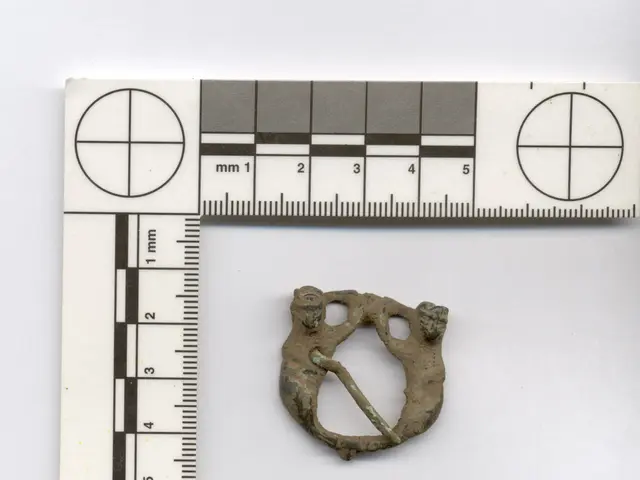Exploring the Mediterranean: Discovering Historical Roots, Cultural Traditions, and Links Among Countries
The Mediterranean: A Vibrant Crossroads of Civilizations
The Mediterranean region, with its rich history dating back thousands of years, is a melting pot of diverse cultures and influences. From the bustling markets of Marseille to the ancient ruins of Istanbul, each destination offers a unique glimpse into the region's layered history.
Istanbul
Historically known as Byzantium and later Constantinople, Istanbul stands at the crossroads of Europe and Asia, reflecting a fusion of Greco-Roman, Byzantine, and Ottoman cultures. The city's architecture, cuisine, and traditions blend European and Asian influences, demonstrating its role as a historic melting pot shaped by successive empires and trade links.
Athens
As the birthplace of democracy and Western philosophy during Classical antiquity, Athens epitomizes the Greek cultural achievements in art, politics, and philosophy. The city flourished in the 5th century BCE, producing iconic architecture like the Parthenon, literature, and ideas that shaped subsequent Western civilization. Its history of city-state governance, participation in the Greco-Persian wars, and cultural prominence during the Classical period contribute strongly to Mediterranean intellectual heritage.
Dubrovnik
Formerly known as Ragusa, Dubrovnik is a historic maritime city on the Adriatic coast, famous for its preserved medieval walls and as a center of trade and diplomacy in the Mediterranean. Its history as an independent republic allowed it to mediate between empires such as the Ottoman and Venetian, embodying the Mediterranean tradition of mercantile city-states and cultural exchange.
Andalusia
This region in southern Spain was a focal point of Phoenician and later Moorish (Islamic) colonization, reflecting centuries of Mediterranean intercultural contact. The Moors brought advances in science, architecture (e.g., the Alhambra), agriculture, and arts, blending Islamic, Christian, and Jewish cultures. Andalusia’s cultural landscape showcases the layered history of Mediterranean civilizations and their enduring legacies.
Provence
Located in southeastern France along the Mediterranean coast, Provence reflects Roman and Greek influences as part of ancient Gaul. It was historically a crossroads for colonists such as the Phoenicians and Greeks and later the Romans, who left extensive architectural and cultural imprints. The region’s Provençal culture, language, and traditions have been shaped by these Mediterranean waves of settlement and exchange.
In addition to these destinations, the cultural history of the Mediterranean can be experienced in various ways. For instance, in Marseille, the Greek ruins of Jardin des Vestiges and the spice-laden Noailles Market reflect a city shaped by migration and exchange. Elsewhere, Le Petit Nice in Marseille offers three Michelin stars for bouillabaisse that represents centuries of Mediterranean convergence. In Dubrovnik, Restaurant 360° serves contemporary Mediterranean cuisine in a location where dignitaries once dined between empires. At Abantal in Seville, Michelin-starred dishes trace North African spices through Spanish history.
The Benaki Museum in Athens houses 37,000 artifacts, including Byzantine icons and Islamic calligraphy, showcasing Mediterranean cultural exchange. In Córdoba's courtyards, fountains still echo verses carved in Arabic. The Parador de Granada occupies a former convent within the Alhambra itself, where guests drift off to sleep serenaded by fountains that have murmured the same Arabic poetry for eight hundred years.
Even today, the call to prayer floats across the Bosphorus at dawn in Istanbul, layering over the sound of ferry horns and seagulls. In Marseille's Noailles market, the shout of vendors mixing with Arabic, Corsican, and Provençal accents fills the morning air. Vendors wheel carts of fresh simit through streets in Istanbul that have heard Latin, Greek, Arabic, and Turkish for over two millennia.
Each Mediterranean destination reveals connections between civilizations shaped by trade, migration, and exchange. Whether it's the Hotel Villa Oniria in Granada, Funky Gourmet in Athens, the Pucić Palace in Dubrovnik, Villa Dubrovnik, the Four Seasons Sultanahmet in Istanbul, or the Hotel Grande Bretagne in Athens, each location offers a unique glimpse into the region's vibrant past and present. In the wine country of Provence's Château de Berne, visitors can explore vineyards that trace back to Greek colonization, while in Seville's hidden tablaos, the raw memory of flamenco's exile and return resonates through the staccato of flamenco heels against tile.
In sum, the Mediterranean’s cultural history, rooted in ancient colonies, classical antiquity, and complex interactions among diverse peoples, has profoundly shaped its key destinations’ architecture, social structures, art, and identities. Each location encapsulates aspects of this cultural palimpsest, illustrating the Mediterranean as a vibrant crossroads of civilizations.
In Istanbul, the fusion of European and Asian influences can be seen in the city's architecture, cuisine, and traditions, showcasing its role as a historic melting pot shaped by successive empires and trade links.
Furthermore, the Wine country of Provence's Château de Berne offers visitors a chance to explore vineyards that trace back to Greek colonization, illustrating the region's long history of food-and-drink traditions and cultural exchanges.




